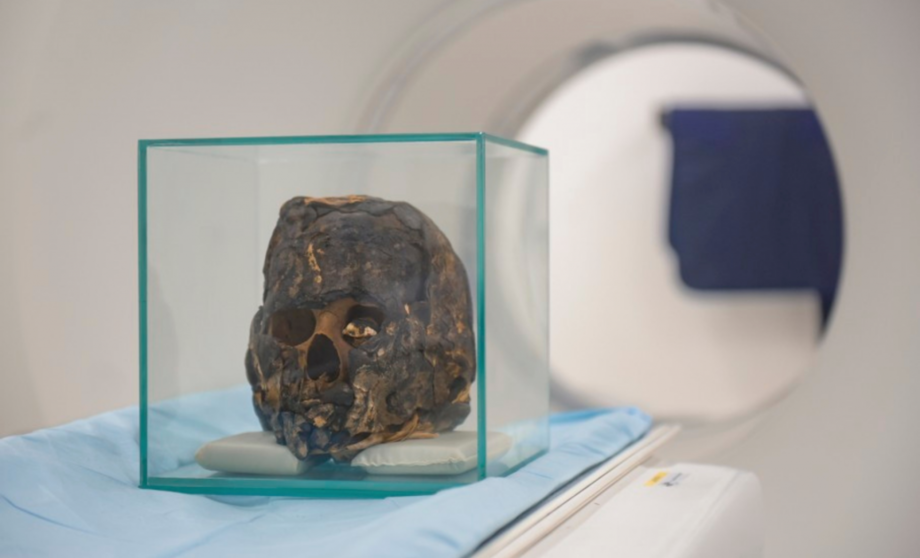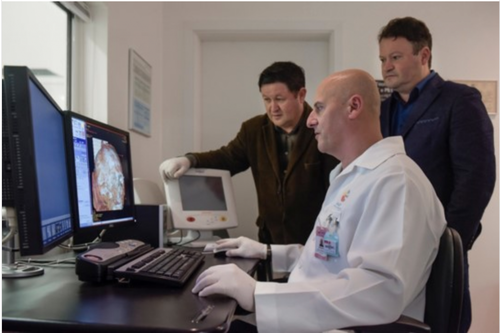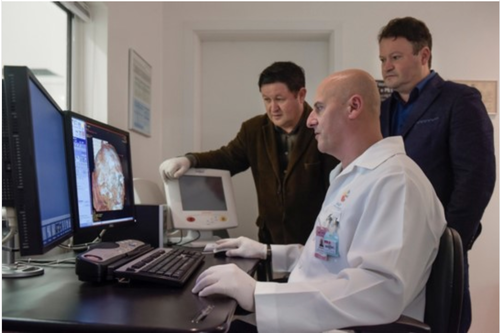PUCRS research resonates internationally by revealing intact cells in mummy
Study developed by the Afro-Egyptian Identity Study Group at the School of Humanities was published by the European Association for Osseointegration
Researchers at PUCRS discovered, from tissue processing tests, that the head of a mummy from 2,495 to 2,787 years old contained cells still intact . Iret-Neferet , as it was baptized, arrived in Brazil in the 1950s, in Cerro Largo. The work was presented at an event recent in Berlin, Germany, promoted by the European Association of Osseointegration . The publication is international reference and has maximum rating by Coordination for the Improvement of Higher Education Personnel (Capes) < span data-contrast = "auto">.
The study was carried out p sibling links Éder Huttner < span data-contrast = "auto">, surgeon buccomaxillofacial and gerontologist , and Édison Hut tner < / span>, teacher d o Graduate Program in History And researcher . Both act in the Afro-Egyptian Identity Study Group of School of Humanities da PUCRS and had the participation of the specialist in Periodontics Bruno Candeias in scientific production. The Brain Institute of Rio Grande do Sul (InsCer) was the site responsible for ex listen to CT scans on the mummy.
The brothers signed an agreement with the Cerro Largo Museum, where a mummy is located, to continue at research s on the topic for another five years . According to them, the discovery is the first of its kind in Brazil and the next step is to close a partnership with the Max Planck Institute, from Germany, specialized in DNA study. < / span>
m cells il < / span> and n ares count a history
Éder was responsible for extracting o tooth Iret-Neferet so that a laboratory < span data-contrast = "auto"> United States could date carbon 14, decisive n < / span> confirmation of the age of the mummy d and yours origin . The material was also processed and underwent histological analysis at the Laboratory of Pathological Anatomy of São Lucas Hospital from PUCRS.
“ The newly made histology allowed the visualization of intact red cells morphologically within a blood vessel in the head, as well as the structure of the bone tissues of the masseter's jaw and muscle, ”he explains.
The results revealed the effectiveness and technological quality of the time in the mummification process and allows further studies on the Genome and Proteome to be carried out.
A new phase for Egyptology brazilian
Édison says that in addition to a historical importance, the discovery also impacts in understanding about health da humanity . “< / span> N naturally this research will serve as a basis for other works , makes nd a reference in Brazil, na America Latin a and until worldwide , mainly and nte when it comes to preservation ee study d human health ”. < / span>
Behind the head of the mummy
Iret-Neferet arrived in Rio Grande do Sul as a gift from an Egyptian to a resident of Cerro Largo. In the late 1970s, it was donated to the Museu 25 de July , in the same municipality. In 2017, Édison visited the museum and started the research. The head of the mummy gained an exhibition, in July, at Biblioteca Central Irmão José Otão , on the Campus.
Photos: Bruno Todeschini




